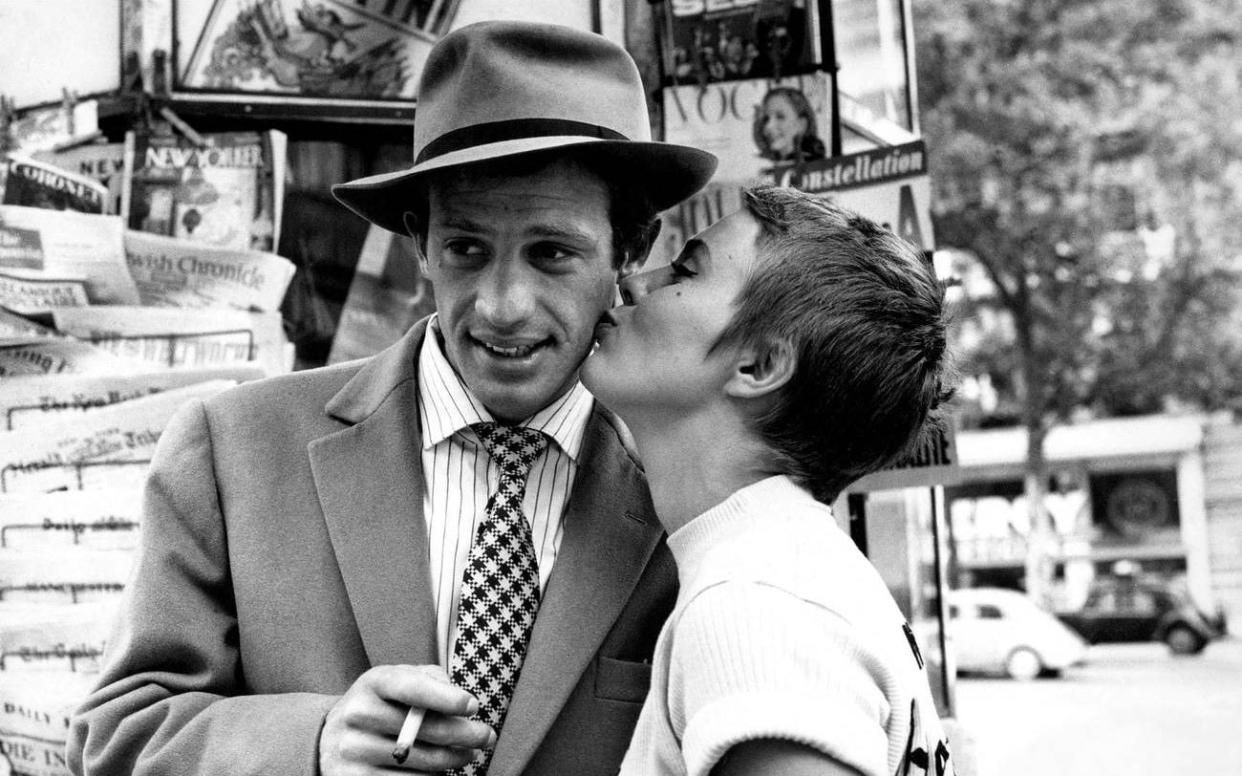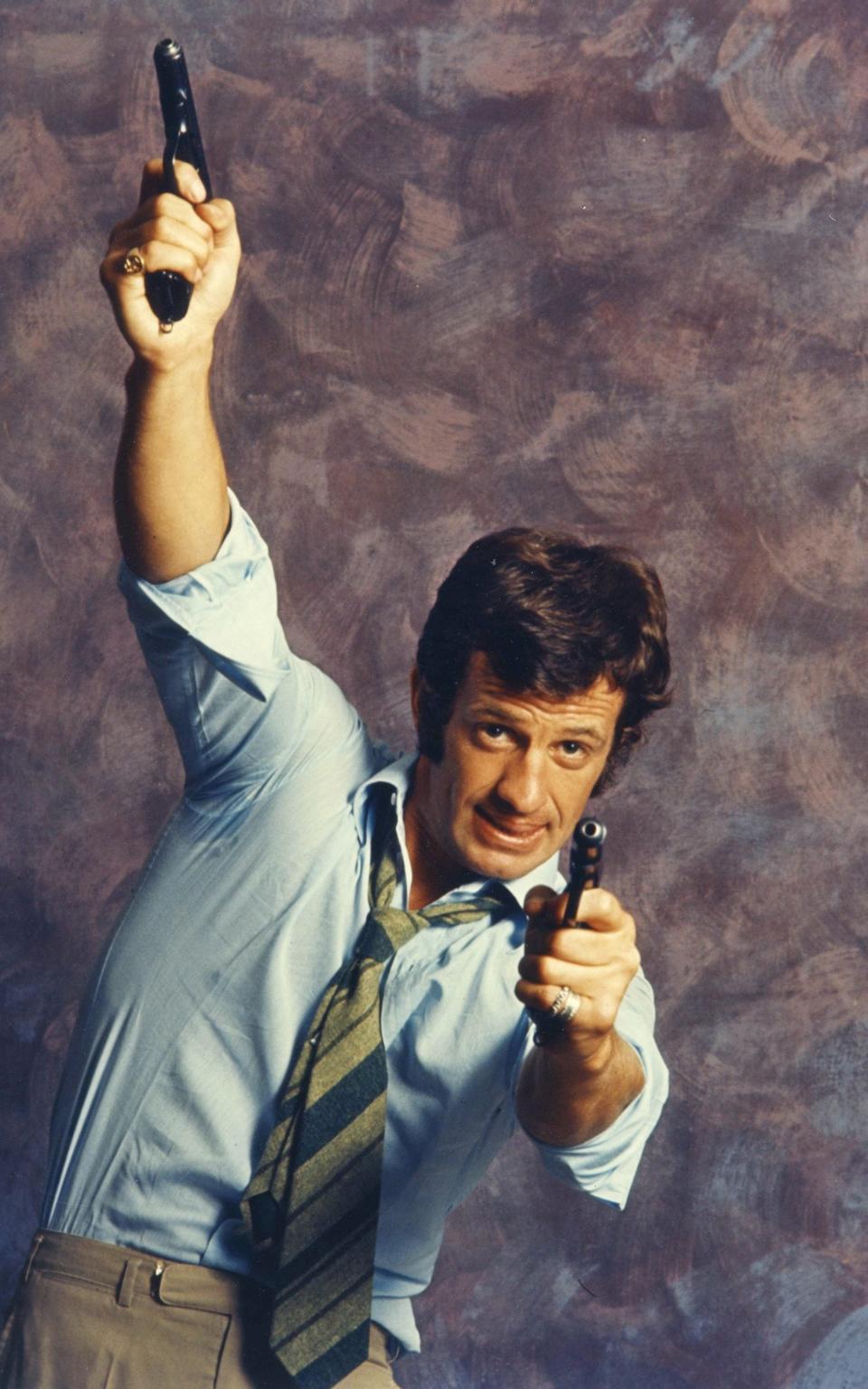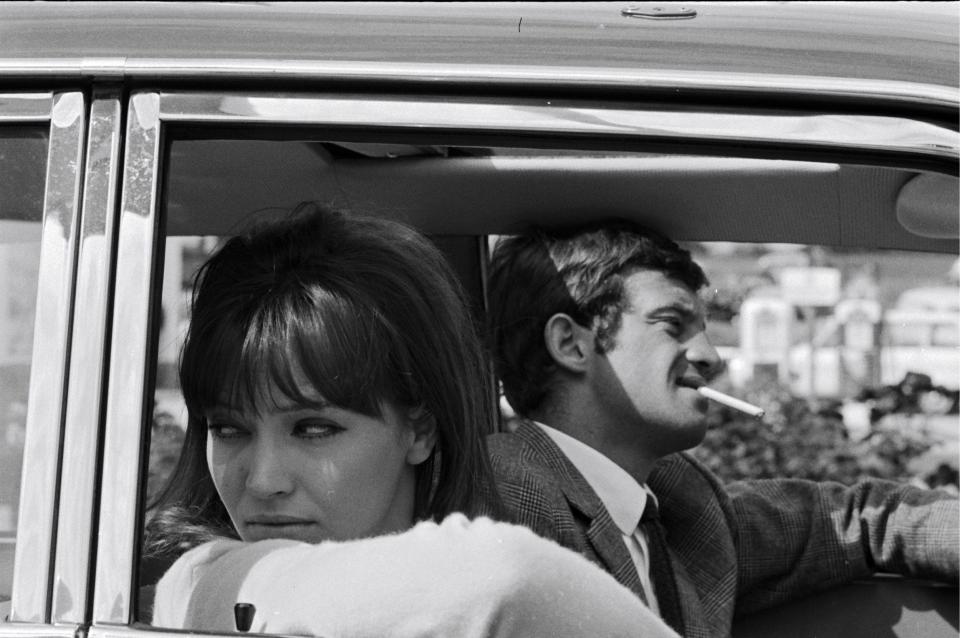Jean-Paul Belmondo, charismatic Gallic tough-guy actor and face of the French New Wave – obituary

Jean-Paul Belmondo, who has died aged 88, was more than any other actor the face of the French New Wave.
When Jean-Luc Godard chose him to play a petty car thief without respect for conventional morality in A Bout de Souffle (“Breathless”, 1960), Belmondo came to define the devil-may-care flippancy of contemporary youth as surely as James Dean had done for his generation in the mid Fifties.
So charismatic was his screen image in those years that a “wannabe” cult sprang up around him, popularly known as “le belmondisme”.

At first glance, he seemed an unlikely icon. He was pug-ugly, like Humphrey Bogart, Jack Palance and Mick Jagger, with fleshy lips and a broken nose (the legacy of a playground punch-up in youth).
But, like many men with irregular features, he generated an atmosphere of danger and excitement that wove its spell on women from a variety of different backgrounds – Jean Seberg’s American student abroad in A Bout de Souffle; shy, repressed Jeanne Moreau in Moderato Cantabile (1960); earthy Claudia Cardinale in La Viaccia in 1961; and the cool, elegant ice maiden played by Catherine Deneuve in La Sirène du Mississippi (1969).
His rise to fame was rapid. “One minute”, he said, “I was reading Cinéma Monde and drooling over pictures of Gina, Sophia and Brigitte Bardot. Then, suddenly, I was holding them in my arms.”

His forte, at least in his early years, was action and violence. He was the archetypal Gallic tough-guy for the second half of the 20th century as Jean Gabin had been for the first. Gabin, indeed, hailed him as the only actor who could take his place. A pity that they acted together only once in a rather untypical comedy, Un Singe en Hiver (1962).
Belmondo was a “philistine” and proud of it. He had little time for “arty” pictures, accepting Peter Brook’s Moderato Cantabile only because he wanted to act with Jeanne Moreau and regretting it afterwards. Though he played for Godard, it was always in his off-the-cuff pictures A Bout de Souffle, Une Femme Est Une Femme (1961) and Pierrot le Fou (1965) – where any pretensions could be masked by an air of Je m’en foutisme.

The one “serious” director with whom he achieved a rapport was Jean-Pierre Melville. They made three films together – Léon Morin, Prêtre (1961), Le Doulos and L’Aîné des Ferchaux (both 1962). Melville’s maverick Existentialism struck a chord with Belmondo.
In Léon Morin, he gave his finest performance as a priest faced with trying to save the soul of a lapsed-Catholic communist lesbian, whose motives in approaching him may not be of the purest.
Although he was hailed at first by critics worldwide as the most gifted European actor of his day, he failed to consolidate that reputation. There was a vein of sloth about him, which was mental rather than physical (in action scenes he was never a layabout, being renowned for performing his own stunts).

On the strength of his early triumphs he marked time, relying on his star quality to underpin a plethora of commercial comedies, thrillers and spectacles – which, for many years, it did at the box office. But artistically he had little of significance to contribute after the Louis Malle costume drama Le Voleur of 1967.
Jean-Paul Belmondo was born in Neuilly-sur Seine on April 9 1933, the son of a sculptor of Algerian-Italian extraction who taught at the Académie des Beaux Arts in Paris. Even today, several of his works, including a cherub modelled on the infant Jean-Paul, can be seen in parks across Paris.
When the family moved to the centre of Paris, Jean-Paul did not flourish and left school to take up boxing. He won 15 of his 23 bouts before retiring to concentrate on acting, where relatively unblemished features were important.
Educated at the Collège Pascal and the National Conservatory of Dramatic Arts in Paris, Belmondo made his stage debut in 1950 and in 1956-57 toured with Annie Girardot and Guy Bedos in a travelling company performing plays in the suburbs and the provinces.
His screen career began (after a scene that ended on the cutting-room floor in film Sois belle et tais-toi) with a bit part in 1957 in A Pied, à Cheval et en Voiture. After a minor role in Marcel Carné’s social melodrama Les Tricheurs (1958), he played one of the two leads in Godard’s early short Charlotte et Son Jules (also 1958), which led to his breakthrough in A Bout de Souffle.

Though he appeared in films by many leading new wave directors, including several by Godard, Claude Chabrol’s A Double Tour (1959) and Docteur Popaul (1972), Truffaut’s La Sirène du Misissippi and Alain Resnais’s Stavisky (1974), about a notorious con-man of the inter-war years, he seemed unable to establish a screen persona outside the gadfly for which he was best known.
His most popular roles, which he repeated with minor variations throughout his career, were as an innocent abroad and a sympathetic gangster. He played the Candide-type role for the first time in 1964 in Philippe de Broca’s The Man from Rio and in its l965 sequel Les Tribulations d’un Chinois en Chine (1965).
And he was the epitome of the smiling face of crime in Borsalino (1970), opposite Alain Delon; they played two criminals whose hats added a new (or at least revived) word to the language.
Belmondo’s last appearances were disappointing. His 1995 version of Les Misérables for Claude Lelouch ranged uneasily from the 19th century to the Second World War in search of universal significance. And Désiré prompted the actor to protest at the fact that his film was shown in only six cinemas in Paris, none of them in the Champs-Élysées, while Disney’s Toy Story could be seen on more than 500 screens across the land.
In 1952 he married Élodie Constantin, with whom he had two daughters, one of whom died in 1993, and a son. They separated in 1965 when he began an affair with the actress Ursula Andress and divorced in 1968.
He had several more relationships, including with Natty Tardivel, a 24-year old dancer whom he met in 1989 when he was in his mid-50s. They eventually married in 2002 and had a daughter, but divorced in 2008.
Jean-Paul Belmondo, born April 9 1933, died September 6 2021

 Yahoo News
Yahoo News 
